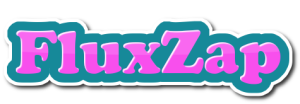🔥 Promoting Digital Products on Reddit
RePromoting digital products on Reddit can be one of the most effective ways to reach highly targeted audiences—when done correctly. Unlike traditional social platforms, Reddit rewards authenticity, transparency, and value-driven contributions. Brands and creators who understand Reddit’s culture can gain long-term organic traffic, engaged users, and direct feedback that improves both products and marketing strategy.
This guide explains how promoting digital products on Reddit works, which subreddits perform best, and how to increase conversions without violating community rules.
Reddit Boards Where You Can Sell Your Products: A Comprehensive Guide

Why Promoting Digital Products on Reddit Works
Reddit is built around topic-based communities rather than follower counts. This structure makes it ideal for niche digital products that solve specific problems.
When promoting digital products on Reddit ethically, creators benefit from:
- Highly targeted niche traffic
- Strong buyer intent for tools, templates, courses, and services
- Long-term organic visibility through upvoted posts
- Direct feedback from real users
Digital products such as Notion templates, ebooks, online courses, SaaS tools, design assets, and digital services consistently perform well when Reddit promotion aligns with community expectations.
Best Subreddits for Promoting Digital Products on Reddit
Choosing the right subreddit is critical. Each community has its own rules, tone, and tolerance for promotion.
Direct Promotion & Showcasing (Promotion Allowed or Tolerated)
- https://www.reddit.com/r/shamelessplug/
- https://www.reddit.com/r/SideProject/
- https://www.reddit.com/r/IMadeThis/
- https://www.reddit.com/r/PlugYourProduct/
- https://www.reddit.com/r/startups_promotion/
- https://www.reddit.com/r/EntrepreneurRideAlong/
- https://www.reddit.com/r/IndieDev/
- https://www.reddit.com/r/IndieHackers/
- https://www.reddit.com/r/ForHire/ (services & digital work)
- https://www.reddit.com/r/slavelabour/ (digital services, strict rules)
These communities are ideal for:
- Launching digital products
- Sharing SaaS tools
- Selling templates, plugins, or online tools
Digital Products, Side Hustles & Online Income
- https://www.reddit.com/r/SideHustle/
- https://www.reddit.com/r/Entrepreneur/
- https://www.reddit.com/r/smallbusiness/
- https://www.reddit.com/r/Startups/
- https://www.reddit.com/r/OnlineBusiness/
- https://www.reddit.com/r/passive_income/
- https://www.reddit.com/r/WorkOnline/
- https://www.reddit.com/r/digital_marketing/
- https://www.reddit.com/r/AskMarketing/
- https://www.reddit.com/r/GrowthHacking/
These subreddits are best for:
- Explaining how your product solves a problem
- Case studies and lessons learned
- Linking your product naturally in comments
Design, Templates, Creative Digital Goods
- https://www.reddit.com/r/graphic_design/
- https://www.reddit.com/r/web_design/
- https://www.reddit.com/r/UI_Design/
- https://www.reddit.com/r/UserExperience/
- https://www.reddit.com/r/Design/
- https://www.reddit.com/r/DigitalArt/
- https://www.reddit.com/r/Illustration/
- https://www.reddit.com/r/FigmaDesign/
Perfect for selling:
- Design templates
- UI kits
- Notion dashboards
- Creative assets
Tech, SaaS, Tools & Software
- https://www.reddit.com/r/SaaS/
- https://www.reddit.com/r/Software/
- https://www.reddit.com/r/AppIdeas/
- https://www.reddit.com/r/Programming/
- https://www.reddit.com/r/WebDev/
- https://www.reddit.com/r/NoCode/
- https://www.reddit.com/r/Notion/ (templates sell well)
Best for:
- SaaS tools
- Web apps
- Productivity software
- Automation tools
Courses, Ebooks, Writing & Education
- https://www.reddit.com/r/ebooks/
- https://www.reddit.com/r/selfpublish/
- https://www.reddit.com/r/writing/
- https://www.reddit.com/r/OnlineCourses/
- https://www.reddit.com/r/elearning/
- https://www.reddit.com/r/ContentCreators/
- https://www.reddit.com/r/Copywriting/
Ideal for:
- Paid guides
- Educational PDFs
- Online training programs
Freelancers & Digital Services
- https://www.reddit.com/r/freelance/
- https://www.reddit.com/r/forhire/
- https://www.reddit.com/r/Upwork/
- https://www.reddit.com/r/SEO/
- https://www.reddit.com/r/socialmedia/
- https://www.reddit.com/r/EmailMarketing/
High-Engagement Utility Communities
How to Promote Digital Products on Reddit Without Getting Banned
Build Credibility First
New accounts that immediately post links are often flagged. Comment, help others, and establish a posting history before promoting anything.
Use a Value-First Strategy
Successful promotion focuses on education, storytelling, or problem-solving. The product should feel like a natural extension of the discussion.
Follow the 90/10 Rule
At least 90% of your activity should be non-promotional. Only 10% should reference your product.
Choose High-Performing Post Formats
- Case studies
- “I built this” stories
- Tutorials and walkthroughs
- Problem–solution explanations
These formats consistently outperform sales-driven posts.
SEO Benefits of Promoting Digital Products on Reddit
Promoting digital products on Reddit also provides indirect SEO value. Reddit posts frequently rank on Google for long-tail queries such as:
- how to promote digital products online
- best tools for small businesses
- Notion templates for freelancers
High-quality Reddit threads can drive organic traffic for months or even years.
Common Mistakes to Avoid
- Posting the same content across multiple subreddits
- Using aggressive marketing language
- Ignoring subreddit rules
- Dropping links without context
These mistakes often result in removed posts or permanent bans.
Final Thoughts
Promoting digital products on Reddit is not about pushing sales—it’s about earning trust. When creators respect community guidelines, offer real value, and participate genuinely, Reddit becomes a powerful channel for sustainable growth.
Done right, Reddit is not just a traffic source—it’s a validation engine, feedback loop, and long-term marketing asset.



















